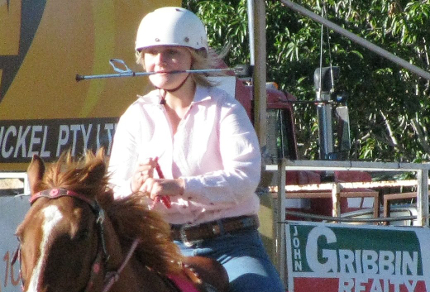After breakfast, I briefly walked alongside the golf course, where the silver velour of dew lay draped over the greens. The morning chorus of rainbow lorikeets, laughing kookaburras, masked lapwings, an olive-backed oriole, and other choristers belted out avian opera to the world. The air was clear and sweet, its cool freshness under the brilliant winter sun engendering a feeling that this was a day of limitless possibilities, a day when anything could happen.
Perhaps the rodeo riders gathered at the Black River Stadium north of Townsville felt the same. When Vilis and I arrived at the stadium in late morning, young steer riders were already shooting for six seconds glued to the back of a bucking bovine, aiming for the big time. Some hung on for six; many didn’t.
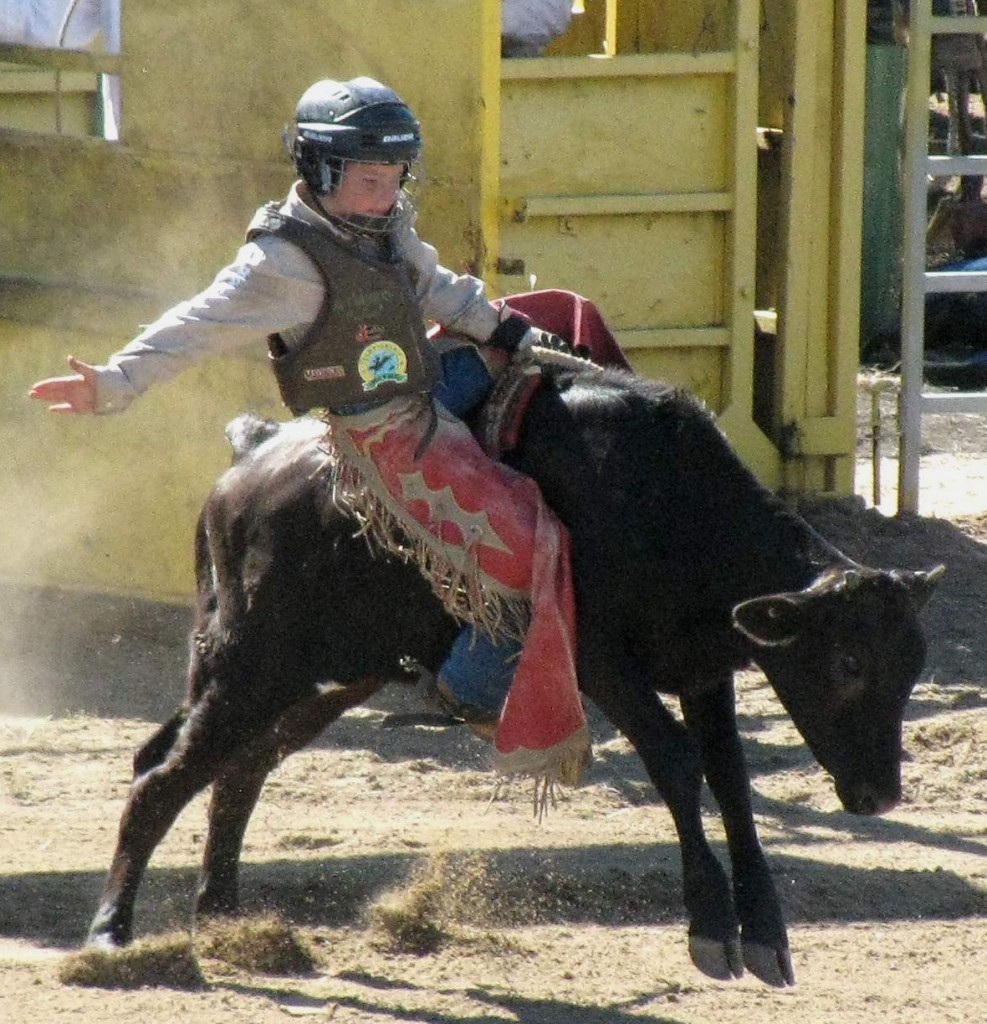
Young Steer Rider (© Magi Nams)
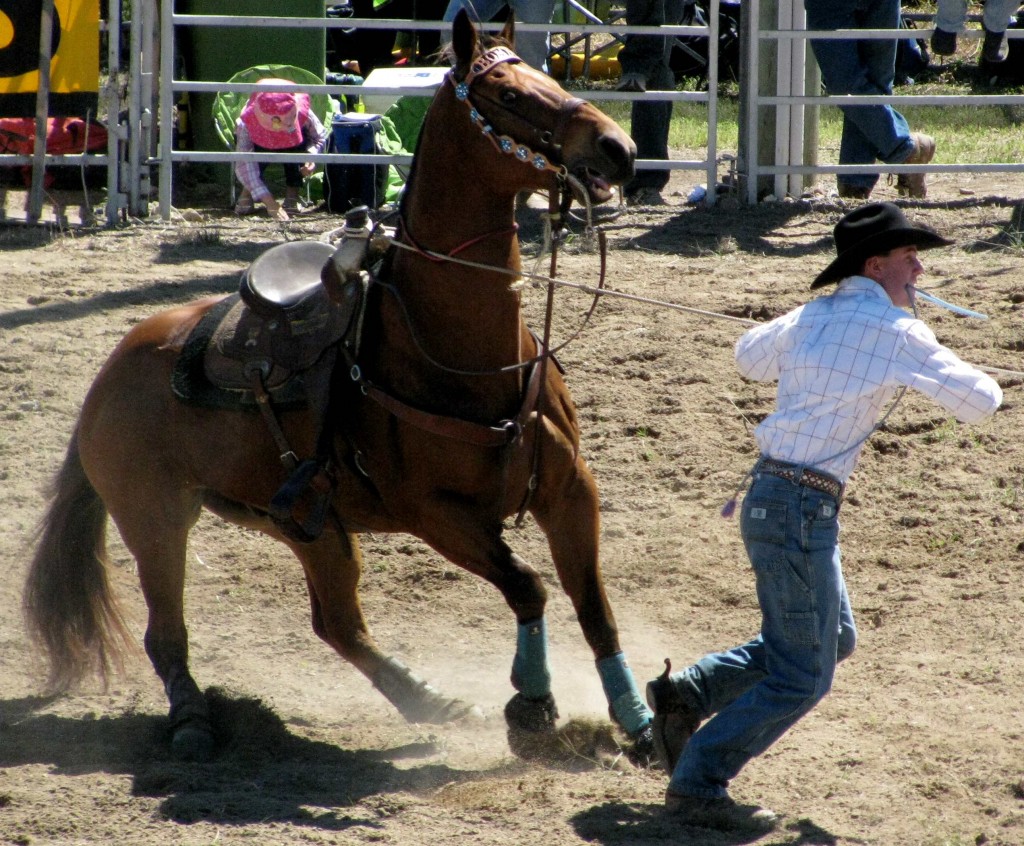
Rope and Tie Contestant (© Vilis Nams)
We sat in the open stands for hours – nearly half a day – during which barrel racers sprinted triangular courses and team ropers tossed lariats at heads and heels of racing cattle. Saddle bronc riders spurred high and handsome on bucking broncs, and breakaway ropers and rope and tie riders (calf ropers) raced the clock to ensnare their cattle quarry.
Alternating with nearly every horse and rider event were the bull riders, making it obvious that bull riding was a big event at the show, and thus is presumably a big rodeo event at all Queensland and perhaps all Australian rodeos.
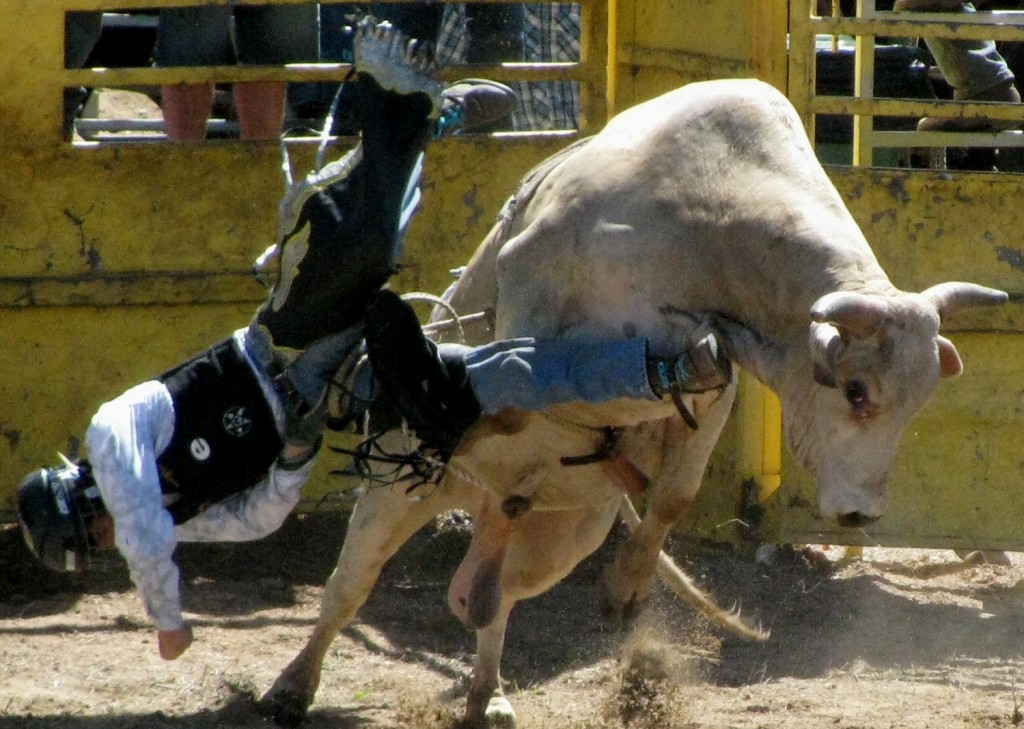
No Time for this Bull Rider (© Vilis Nams)
They start young, too. The smallest riders in the under-8 category looked to be little more than toddlers held on bucking calves by adults, with the rowdy mounts led by rodeo clowns. As the age of the rider increased, so did the machismo of the bulls, until the riders in the open, 8-second event mounted burly, thick-necked barrels of bulging muscle that exuded sheer, adrenaline-pumping power. Bulls climbed chute rails, spun riders in crazy circles, slammed riders against the metal arena fence, stomped over a few, and tried to gore others. Some simply bucked like spine-jolting rollercoasters. One escaped back into the arena from a holding pen during the rope and tie competition and, seeing a cowboy crouched over his roped calf, ran straight at him and leaped over both calf and roper. The cool-headed cowboy glanced up, saw the bull coming, ducked to avoid his lunge, and after an instant’s pause, finished tying his calf’s feet. The bull, meanwhile, ran out of the arena, causing chaos among the cluster of waiting cowboys and cowgirls before eventually being rounded up and returned to the arena.
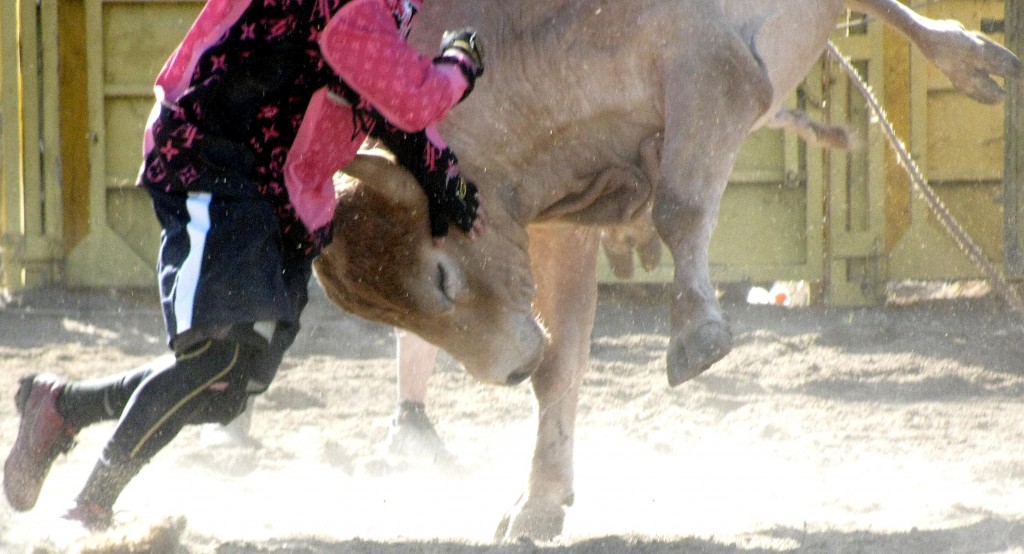
Rodeo Clown Distracting Bull (© Vilis Nams)
At sunset, rolling hills formed silhouettes against fading, gold-tinged light filtered by thin, loose-hanging canopies of gum trees in the foreground. A Brilliant white crescent moon and the evening star Venus rode the deep blue sky that faded into slate in the east. Rounded canopies of eucalypts were a deeper darkness barely hinting at green. Insects swarmed the stadium lights – erratic, glistening streaks against the night. The heat of day yielded to clear, cool air that settled in over the arena, stands, and a grassy slope freckled with spectators’ lawn chairs and blankets. A mellow, easy atmosphere pervaded the “tea break” between the earlier events and the big guys and gals (plus those endearing under-8 calf riders) slated for the evening’s events. Children fussed in the crowd, had their diapers changed in the open air, or held flourescent spinwheels that tossed out searing rings of penetrating blue, red, and green. Cowboy hats reigned supreme, and warm, intimate country music played in the background – Garth Brooks, Michelle Wright, Shania Twain and others, with some great old Elvis hits thrown into the mix. For an Alberta girl who grew up in the heart of Canadian rodeo country and had school friends who went on to become rodeo champions, it felt like home.
The Black River Rodeo held none of the academic intensity of the 3-minute research presentations at JCU I wrote about in yesterday’s post; rather, it was all about reflex and raw, muscular beauty – of bulls and horses, and in a whole different way, of the riders. I watched competitors warm up their horses in a grassy paddock with a pond in its centre and the towering gums and rolling hills forming a backdrop behind them. Here, on the other side of the world from the origins of rodeo, they looked good. They looked right.
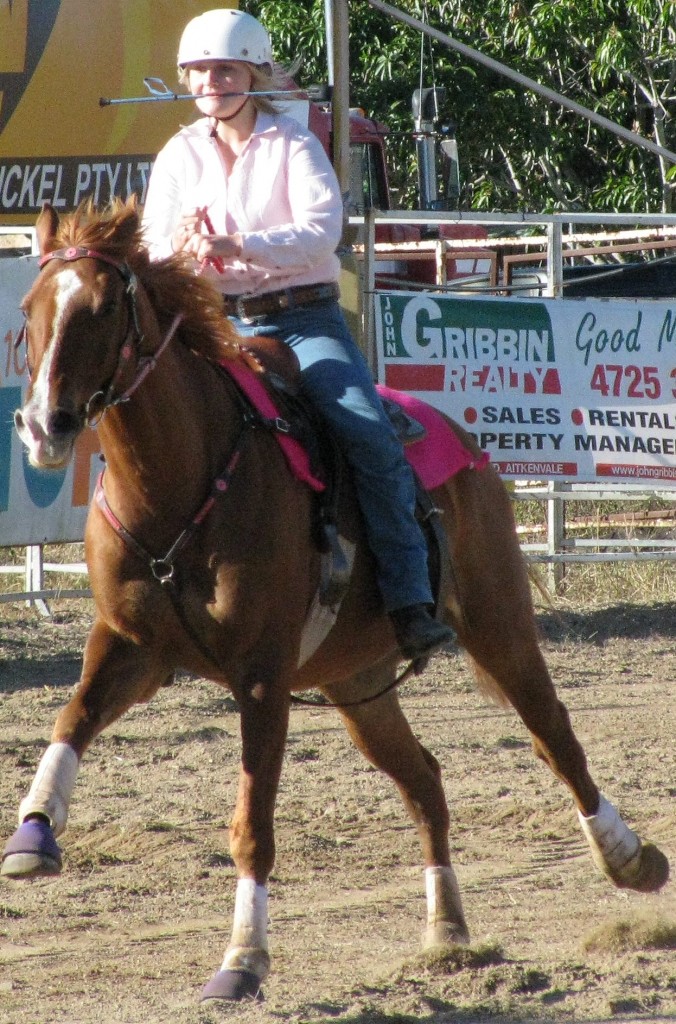
Barrel Racer (© Vilis Nams)

Bull Rider (© Vilis Nams)

